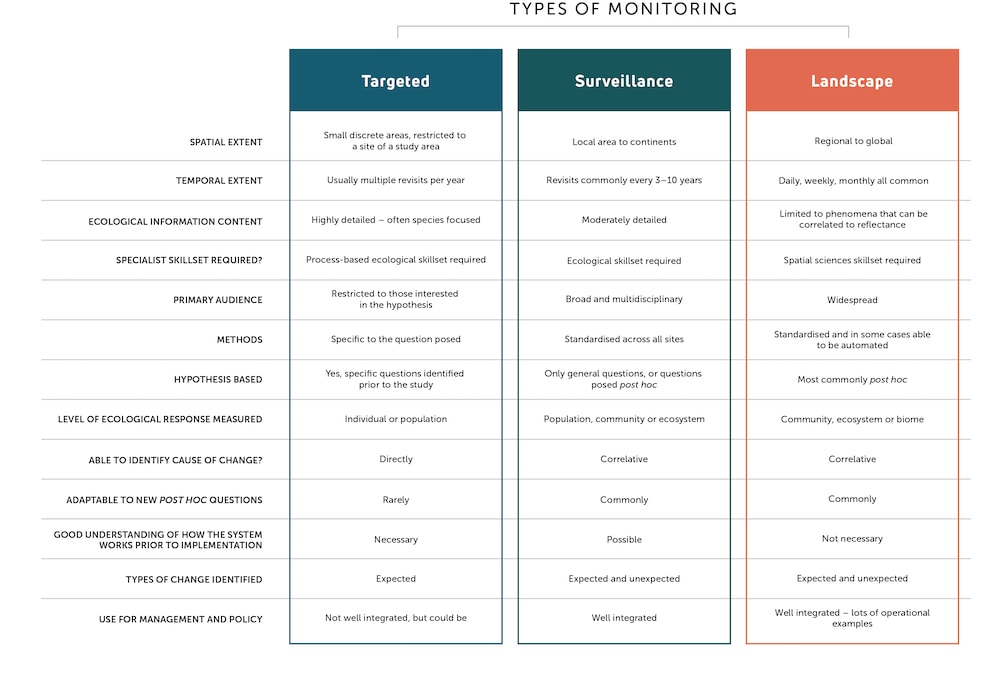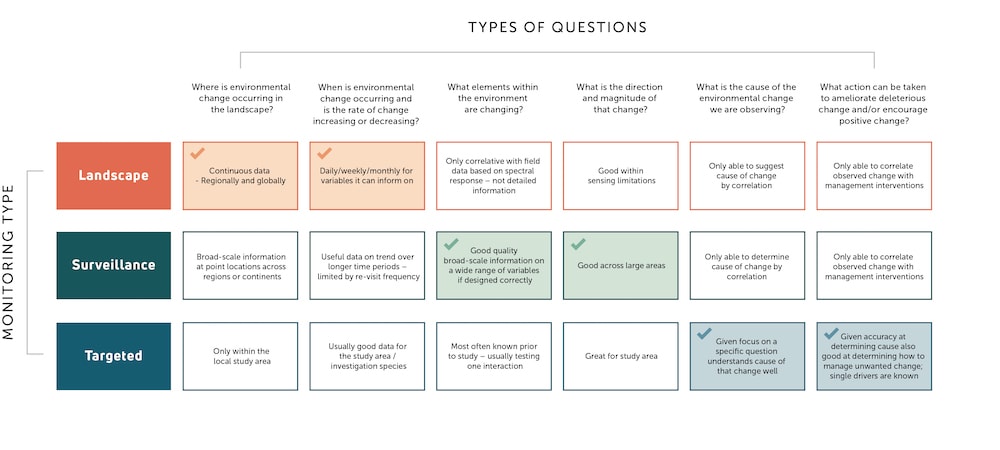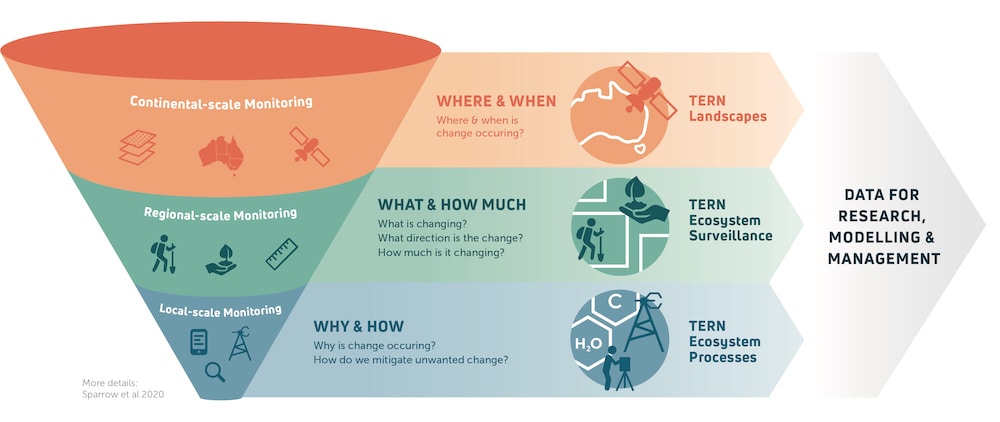A new paper has critically reviewed the main types of environmental monitoring and recommended the widespread adoption of three classifications to provide consistency and clarity. The scheme allows scientists and land managers to design programs suited to their needs that inform on multiple aspects of ecosystem change. It sets researchers in good stead to understand some of our greatest environmental challenges.
The importance of a consistent and clear ecosystem monitoring framework, and a collaborative approach, is outlined this month in a paper published in the international peer-review scientific journal, Biological Reviews.
Complementary types and scales of monitoring are required to track changes in ecosystems and their valuable services, and the paper proposes three classifications of monitoring: 1) ‘targeted’; 2) ‘surveillance’; and 3) ‘landscape’ monitoring.
Landscape monitoring is conducted over large areas, provides spatial data, and enables questions relating to where and when ecosystem change is occurring to be addressed.
Surveillance monitoring, or monitoring at a regional scale, uses standardised field methods to inform on what is changing in our environments and the direction and magnitude of that change.
Targeted monitoring is designed around testable hypotheses over defined areas and is the best approach for determining the causes of ecosystem change.
The supporters of the ecosystem monitoring classification system say that it is flexible, and can be adapted to address different monitoring goals. Lead author, Assoc. Prof. Ben Sparrow of TERN says that it also provides the necessary consistency and structure across discrete ecosystem monitoring programs.
“This paper is constructive because it identifies and documents best practice for ecosystem monitoring. The framework ensures all of the key categories of questions posed to ecosystem monitoring programs are covered, across different spatial and temporal scales. When these data are integrated, scientists and land managers have access to a vast range of information essential to address increasingly complex and diverse questions about environmental change”
Assoc. Prof. Ben Sparrow, TERN and the University of Adelaide
Understanding key ecosystem monitoring questions
The authors outline six fundamental categories of monitoring questions that scientists and managers routinely consider, and that ecosystem monitoring data must be capable of answering.
These are: (1) what elements within the environment are changing? (2) What is the direction and magnitude of that change? (3) Where is environmental change occurring in the landscape? (4) When is environmental change occurring and is the rate of change increasing or decreasing? (5) What are the causes of the environmental change we are observing? (6) What action can be taken to ameliorate deleterious change and/or encourage positive change?
Each monitoring type collects useful data at the scale for which it is designed. However, due to the trade-off between space, time and information content of each monitoring type, only a multi-scale approach can address the full range of fundamental ecosystem data monitoring questions.
“If we’re going to successfully address some of our greatest environmental challenges, it is essential that we include information from each of these monitoring scales. This is best achieved through close collaboration between scientists, land managers and agencies whose focus is often concentrated at different scales with different intents.
“Using this scheme, scientists and land managers can design programs best suited to their needs while simultaneously gaining appreciation of the spatial and temporal context of their program in the broader Australian ecosystem monitoring context. This sets ecologists in good stead to achieving our goals.”
Assoc. Prof. Will Edwards, TERN and James Cook University.
Developing and implementing the framework
TERN played a key role in the development of this best-practice monitoring framework. The classification system is embedded in TERN’s choice of research infrastructure, enabling the collection of data intended to help researchers address all six types of questions posed to ecosystem monitoring programs.
Organising TERN research infrastructure in this way allows operators of each monitoring scale to focus on their speciality, their two key ecosystem monitoring questions in the table above, whilst working collaboratively as part of an organisation to integrate data, which can be used to shed light on on all of them.










